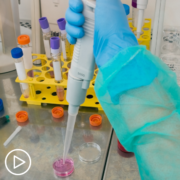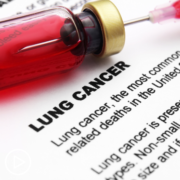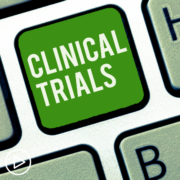When Is It Time to Treat Waldenström Macroglobulinemia?
When Is It Time to Treat Waldenström Macroglobulinemia? from Patient Empowerment Network on Vimeo.
Waldenström macroglobulinemia (WM) is a condition that may not require treatment right away. WM expert Dr. Jorge Castillo explains the watch-and-wait period and discusses factors that may indicate treatment is necessary.
Dr. Jorge Castillo is Clinical Director at the Bing Center for Waldenström Macroglobulinemia Dana-Farber Cancer Institute and Assistant Professor of Medicine at Harvard Medical School. Learn more about Dr. Castillo, here.
See More From The Pro-Active Waldenström Macroglobulinemia Patient Toolkit
Related Programs:

Factors That Affect Waldenström Macroglobulinemia Treatment Decisions |

What Are the Treatment Goals for Waldenström Macroglobulinemia? |

|
Transcript:
Katherine:
Help us understand when it’s time to treat. Certain patients, as you said, don’t really need treatment right away because they’re asymptomatic. So, which patient type should begin to get treatment?
Dr. Castillo:
That’s really the most important aspect of the discussion, I would say, because from my perspective – you know, I’ve been doing this for almost a decade, seeing probably 3,000, 4,000 patients with Waldenstrom’s in my career, I think one of the most important decisions is when to treat.
A number of our patients will be asymptomatic, and they will remain asymptomatic for years. So, really, treatment initiation in this scenario is not reasonable. Number one, we don’t cure the disease. Number two, patient have a long survival. I’m talking about 15, 20 years of survival in a large proportion of patients. So, a treatment that is going to last a year is not going to change a 20-year survival, so we don’t extend the survival of our patients in most cases.
Katherine:
Right. If a patient has been on watch and wait, how do you know when it’s time to begin therapy?
Dr. Castillo:
Yeah, so essentially, when we see patients in whom we decide to monitor, right, watch and wait, which is monitor them, we follow them over time, and we see them sometimes every three months or every six months, and we get bloodwork.
We do bloodwork on those patients to look at the hemoglobin, just to see if there’s anemia or not, to look at the IgM to see if it gets too high or not. And if the IgM is too high, sometimes, we’ll have the patients have eye examinations on a yearly basis to make sure that there’s no changes in the vessels in the back of their eyes, in their retinas. That’s an indication of hyperviscosity. And every time we see them, not only do we look at the numbers, which I think is important, but we also look at the symptoms.
So, I classically ask my patients, “How’s your energy level, how well you’re doing, still able to do everything you want to do? Any numbness in your feet? Right? Any nosebleeds, any headaches, any blurred vision, right? Any lumps? So, I just go over this list of different symptoms that patients can experience. Are you having fevers? Are you having night sweats? Are you losing weight for no reason? Right? So, it’s a monitoring process.
Just to clarify further, for example, a patient can come to see me with anemia, and I know that Waldenstrom’s causes anemia, as I said before. But it is my duty as a doctor to make sure that there’s no other reason why the patient might be anemic. So, even though in the scenario, which is very likely that the disease is causing this problem, I still need to make sure that it is not something else driving this anemia for the patient, and then the anemia is severe enough. You know, some patients say, “Yeah, I’m a little tired, but I’m still able to do everything I want to do.”
So, really that’s a very minor process. And there are people who tell me, “You know what, I cannot play with my children anymore, right, because I’m so tired,” then that’s a different process. So, the severity of the symptom and how related to the disease it is, that combination is what really tells us who needs to be treated or not.
So, what I would say in terms of treatment timing for Waldenstrom’s patients, it’s not that you need treatment and then you don’t need it, and then you need it. It’s not like that. It’s more like you don’t need it; you don’t need it; and then it is reasonable to treat. And there is a period in which it’s reasonable to treat, and that period can last sometimes months to years. Some patients can decide to be treated a little earlier in the process with less symptoms. And some patients can decide to be treated a little bit later with more symptoms.
So, it has to do a lot with the patients, how they feel, how they’re tolerating the symptoms, how dangerous or potentially threatening those symptoms are. And that’s a conversation that it needs to take place between the doctor and the patient, understanding the patient’s preferences.

































